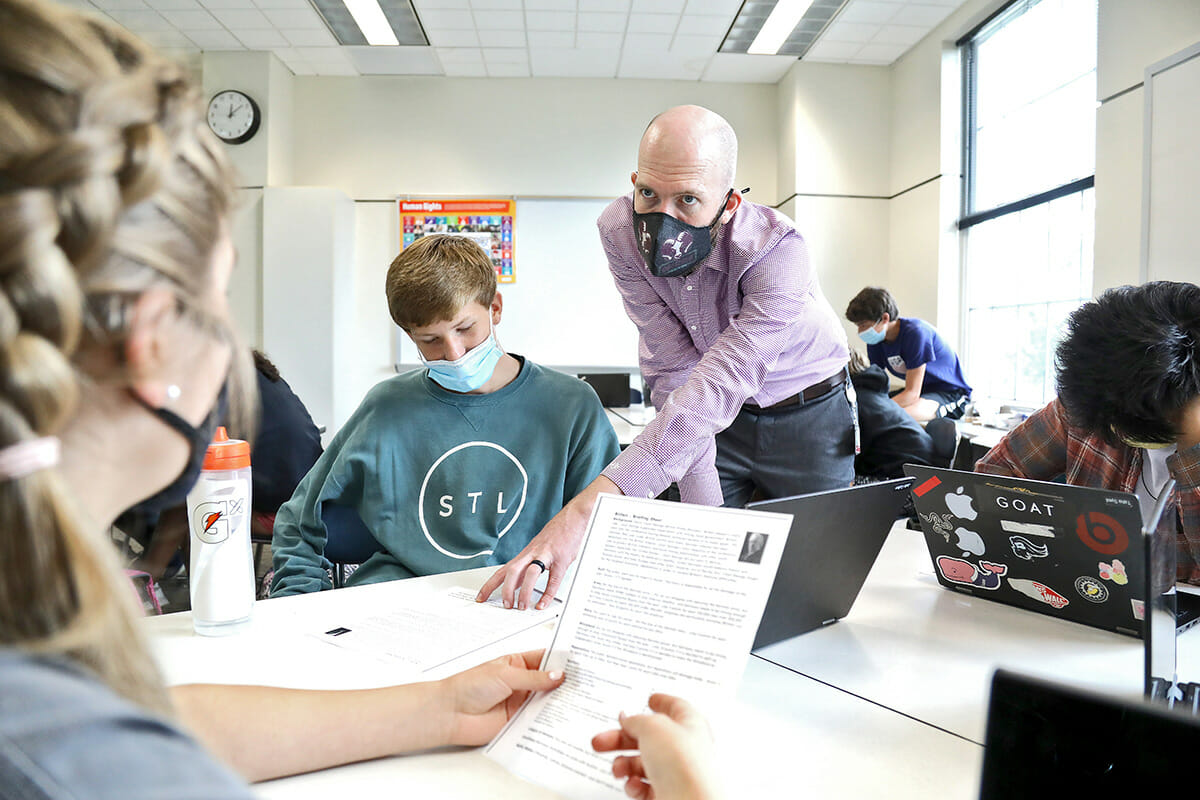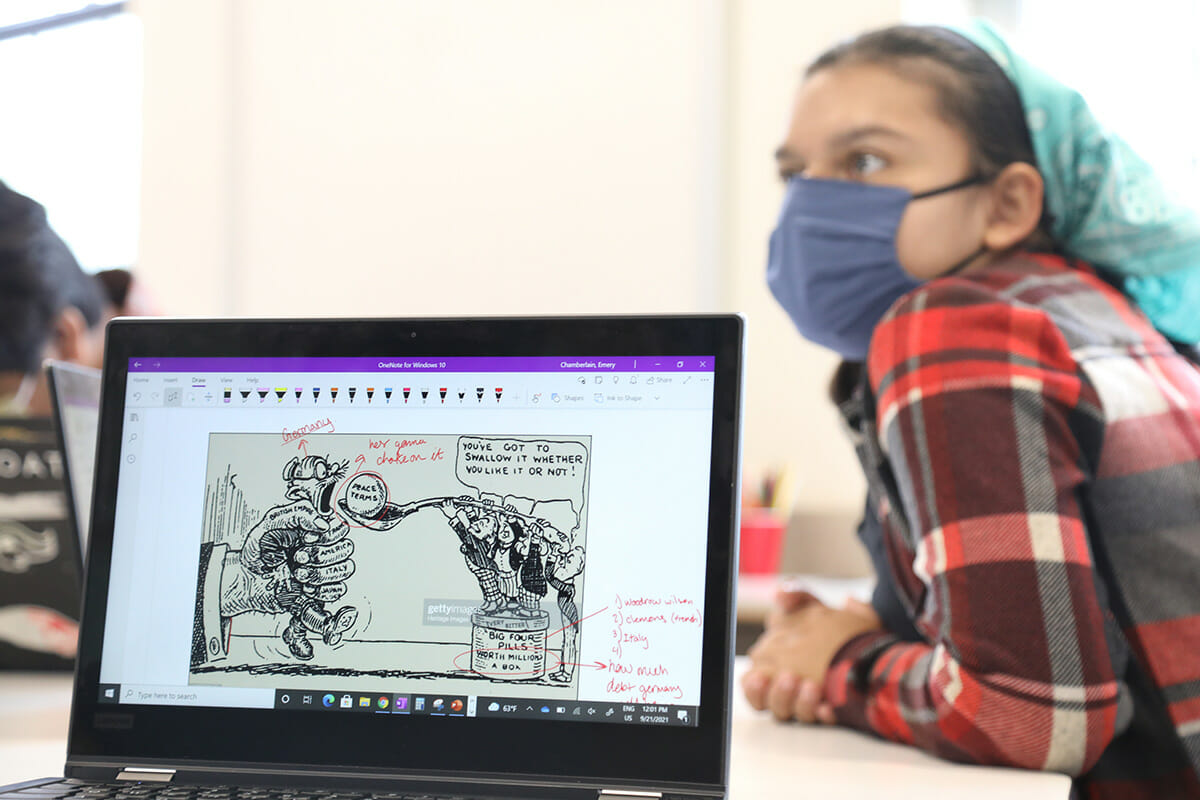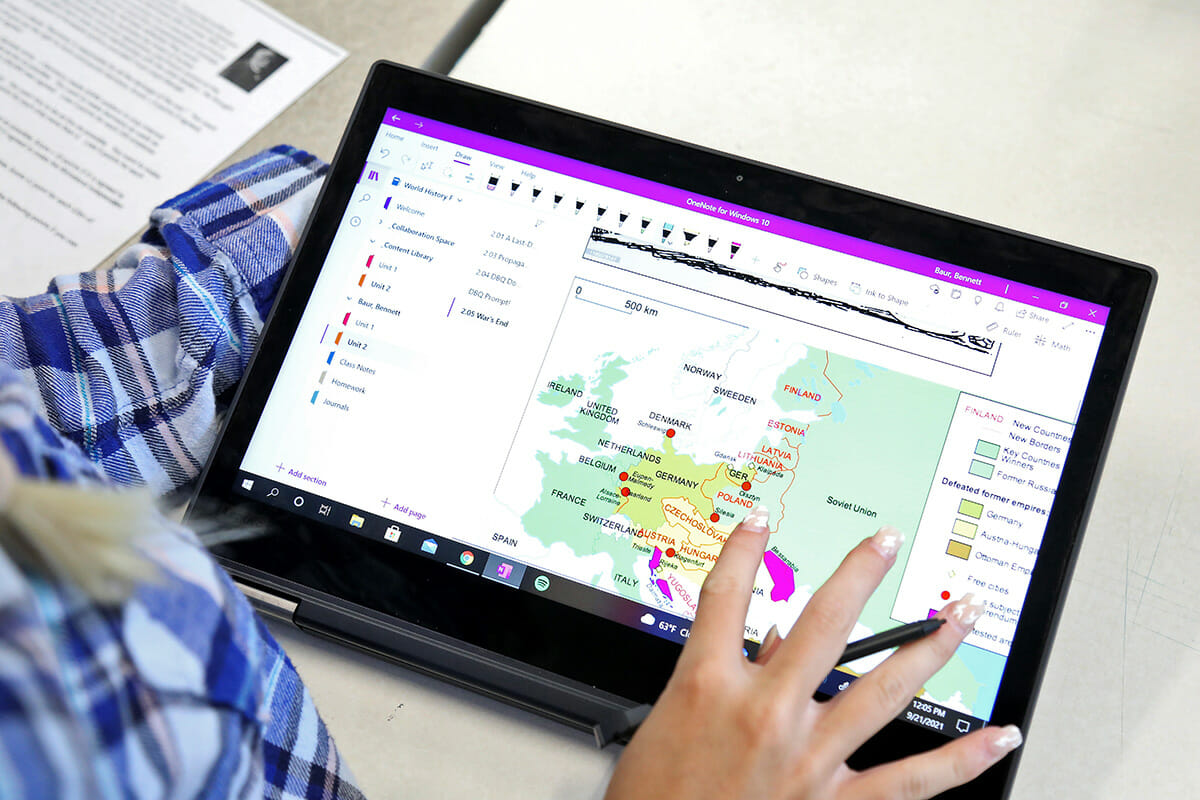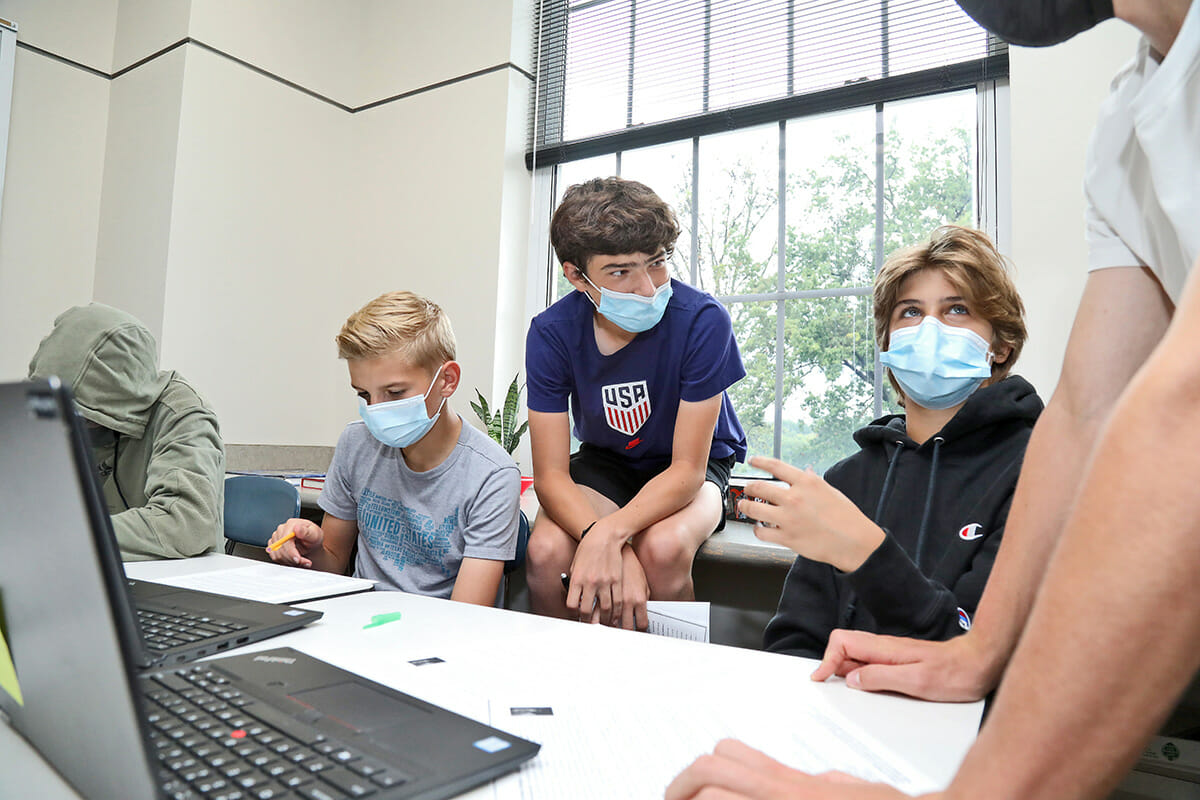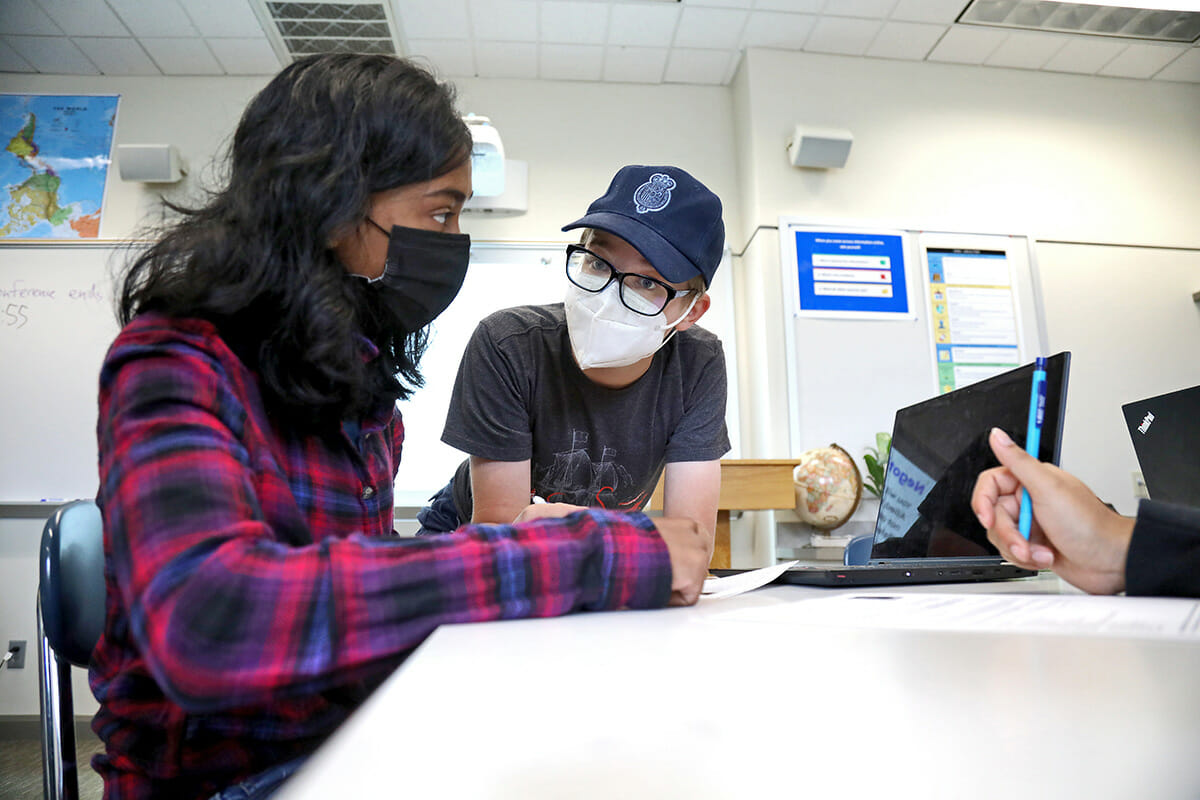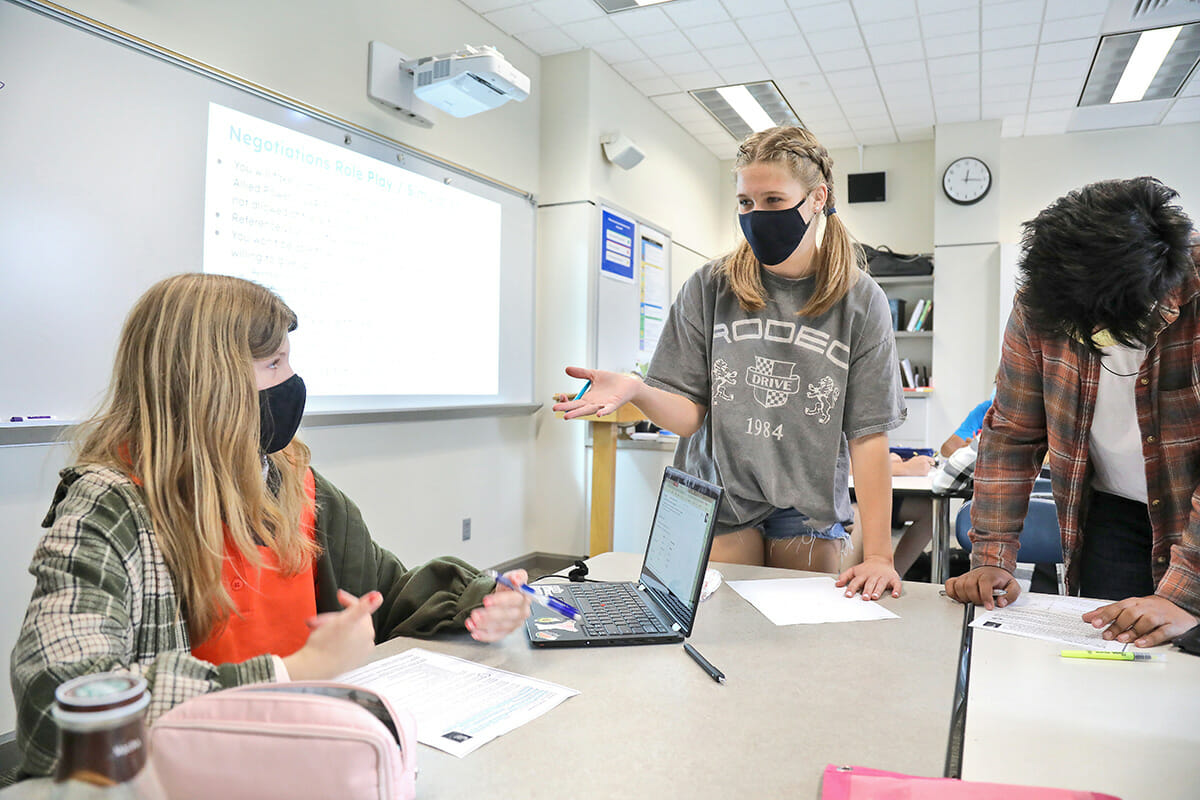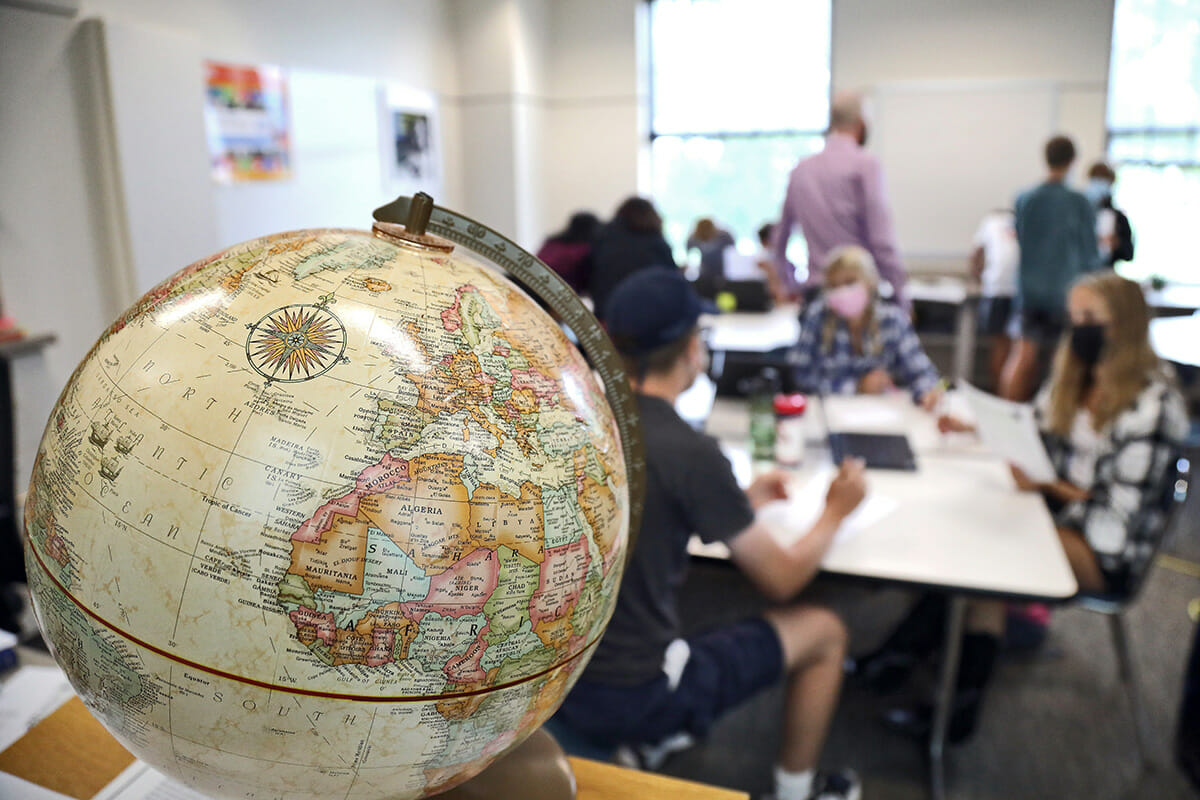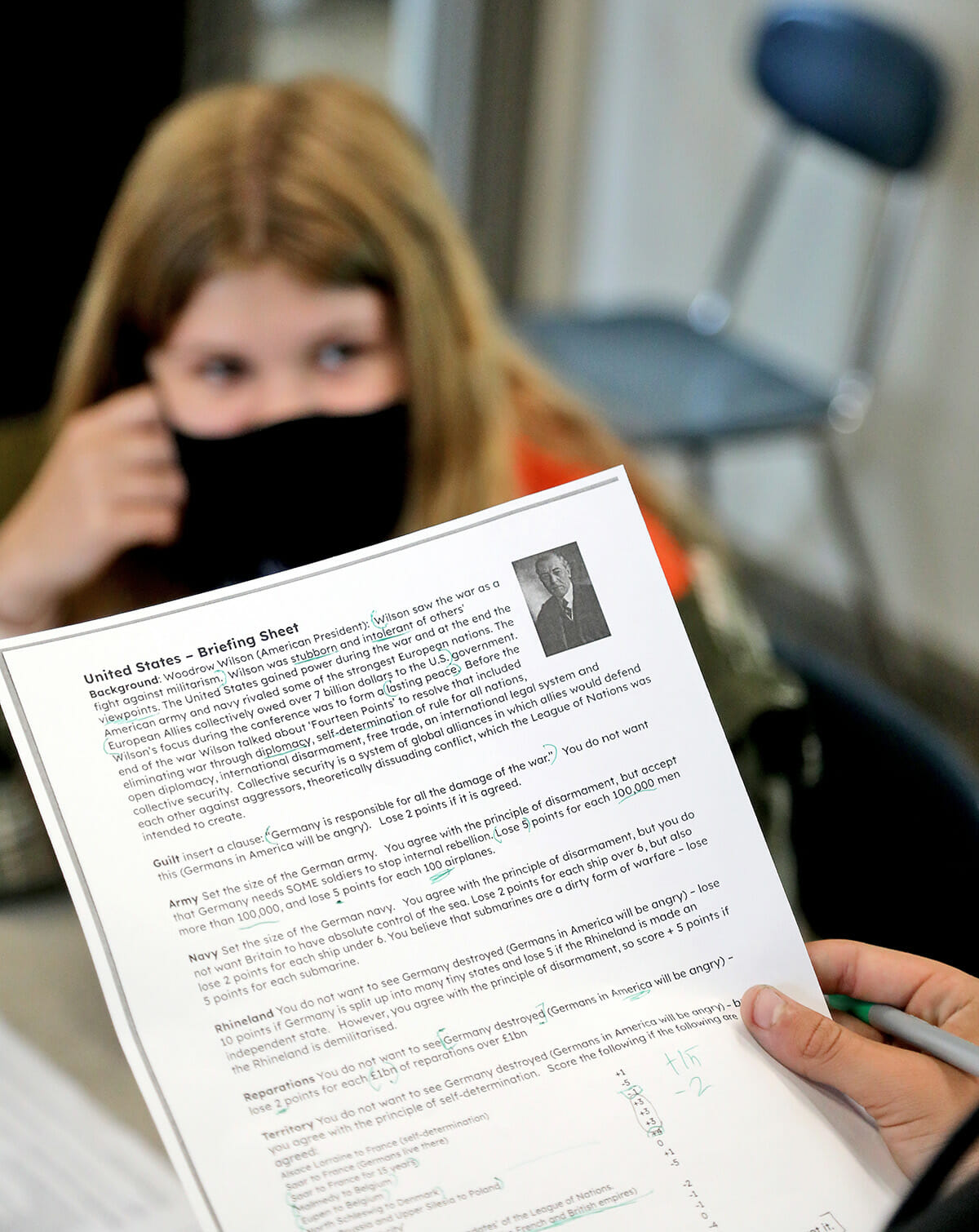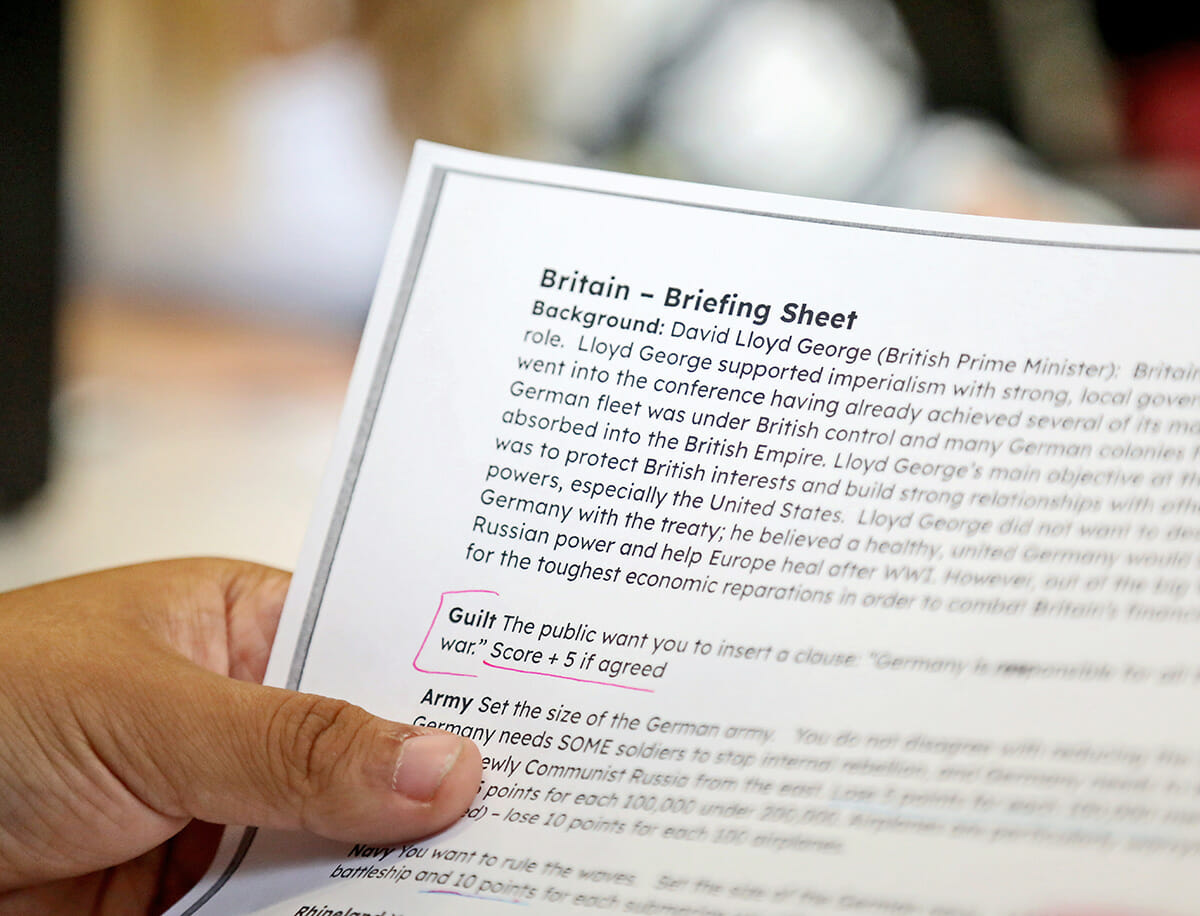In June 1919, World War I ended with the signing of the Treaty of Versailles in Paris. The treaty codified peace terms between the victorious Allies and Germany and held Germany responsible for starting the war. Germany also faced harsh penalties through loss of territory, reparations payments, and demilitarization. The Treaty failed to resolve the underlying issues that led to war, and a humiliated Germany suffered economic distress and resentment. These feelings helped fuel the ultra-nationalist sentiment that led to the rise of Adolf Hitler and the Nazi Party, and, eventually, a second world war.
To better grasp how the resolution of WWI ultimately led to WWII, ninth grade history students recently embarked on a simulation of the Treaty of Versailles. Each table was assigned one of the original Allied negotiating countries (United States, Britain, and France), and Alex Rolnick, Upper School History Teacher, added Germany as a negotiator even though they had no representatives at the table in 1919. He built the simulation based on materials that Dr. Tanya Roth, Middle and Upper School History Teacher, had assembled, and incorporated a video about President Woodrow Wilson’s 14 Points and the Treaty of Versailles, some maps, and then follow-up information to help wrap up the exercise. Rolnick appreciates the work Roth did to set up the exercise. “It wouldn’t have happened without the materials she’d already put together!” he said.
“The simulation allowed students to understand more deeply the perspectives of the varying actors they represented—the United States, Britain, France, and Germany—and to see how even the allies in war had substantive disagreements about how the war should be resolved,” said Rolnick. “These disagreements and the compromises they led to paved the way for future conflict.” The ahistorical addition of Germany gave voice to German concerns that were not present during the actual treaty negotiations and allowed students to understand how the concerns of the losers of the war were not considered. The simulation also helped students to understand how complicated negotiations are, and the importance of working together to compromise.
“After the simulation, we reflected on learning and I gave a brief lecture on the actual treaty to help students understand the historical events,” said Rolnick. “We also discussed some views of primary sources on the treaty.” Here are excerpts from several student reflections:
- “Some negative impacts is that the people who suffered the most were the people who had no say in what was going on. One main takeaway from our simulation was that no one really wins a treaty. People were disagreeing and no one could really gain anything.”
- “The Treaty of Versailles was a big factor in WWII. It angered the Germans and they were out for revenge.”
- “The simulation showed me how hard it is to negotiate. I thought it was way easier. I am surprised there was conflict between allies.”
- “[The Treaty of Versailles] caused much more conflict between the Allies… For example, the U.S. was never able to really agree with the other countries. Blaming the Germans, they ended up having to pay huge reparations along with other losses in men, ships, and more. This angered them so much, that by ending WWI, they were just opening up anger and fury for the Germans to start WWII.”
- “The Treaty of Versailles was a mistake because it damaged Germany to the point of no return.”
- “This simulation allowed us to see that sometimes to win some you have to lose some… It also taught us that even if the allies are on the same side, that didn’t mean they would agree to everything.”
- “Although some topics were hard to agree on, you have to sacrifice multiple little things for bigger things that are more important.”
